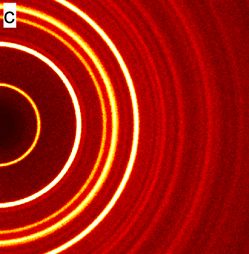You won’t find these symbols on most devices though (certainly not on any macbook as the picture suggests).
By removing the symbols they were able to shave the case down 0.0003nm, making it the thinnest and lightest laptop ever.
Courage!
Stunning and brave!
How brave!
If they etched the symbol they could have reduced the weight of the laptop by 0.003g making it even better
But if they omit the symbol entirely, they save 0.003 cents per unit, but they will continue to charge the same inflated retail price for it and all their cult members will cover for them by gushing about how sleek the “minimalist” design is.
You know it’s a thunderbolt connection on a MacBook. They stopped using the USB symbol when they used the usb for thunderbolt and stopped using the mini display port.
I didn’t take the image to be showing a macbook, it could just as easily be my computer or probably many others.
It could be, but combine the color looking very much like Apple’s space grey, the slimness of it, particularly how slim the lid is versus the body, and what looks like the MacBook’s classic black, rounded rubber stoppers on the bottom, I think it’s safe to say that’s meant to be an MacBook.
Also certain MacBook models tried to go to a single USB C port about a decade ago, and it was on the corner like that.
True, my latest Dell laptop has 3 “usb-c shaped ports”, there is 0 symbol anywhere close to them or the underside cover, you’re on your own as to what it supports, you have to find the doc online somewhere I guess.
I discovered that my Thinkpad apparently supports charging from all of the (unlabeled) USB-C ports after I inadvertently started it charging from my cell phone’s (unlabeled) USB-C port.
I can do you one better: My GPD laptop has a charging indicator on the center type-C port indicating that this is where the power supply goes, but it can actually be charged from either port regardless of the icon. Both ports are USB 3.0 or 3.2 or whatever the current fast standard is this week, but only the center one supports video out via an external GPU enclosure. So if you want to use it docked with an eGPU, it’s actually required to not plug the power supply into the port that says you should plug the power supply into it.
So not only is the marking meaningless, it’s arguably worse than meaningless because in one of the headline hardware setups for the machine it is actually 100% incorrect to do what the marking is telling you to do. Wrap your head around that one…
Tbf my work Dell Latitude 5440 has a USB A with a SS5, an A with a SS5 and charging indicator, a C with a thunderbolt indicator, and a C with a battery and a thunderbolt indicator.
So at least some of their laptops do in fact have the indicators similar-ish enough to what the infographic shows.
my 5680 has absolutely nothing. Checking online I found that the right one is a usb-c 3.2 and the 2 left ones are TB4. IIRC they all support DisplayPort and all support being used as the power input (165W charger), not sure for PD and fast charging a cell/tablet…
Opie did not say targeted advertising OP said get rid of all advertising I was responding to that
You’re going to find that the appetite for un-targeted advertising to be much lower than that of targeted. The ROI for un-targeted blast is much lower than a smaller more focused targeted campaign.
As such, you’ll either see even more ads on the same content (in order to obtain similar level of revenue for the publisher), or, as the other user suggested, free ad supported service be a thing of the past.
Neither of which are good for the mass audience. People already aren’t willing to pay $1 to remove ads on most free ad supported apps, you’re going to find small businesses collapse left right and centre as result of the change.
Nothing worth feeling bad for will collapse.
People are not willing to get ads into every orifice, just nobody’s asking them. Ad blockers are reactive.
Bigger businesses will feel more pain, I can promise you that. Smaller businesses do not benefit from this ecosystem, quite the opposite - it heats up those who pay more for advertising, or those who are partners with those doing advertising.
As of payments again - when you are getting ads into your face with a message that you can pay to use something without them, you naturally feel against it.
With some devices, I assume that they’re trying to save a bit of money.
With the MBP, I’m pretty sure that they just don’t want to disrupt the designer’s vision of the aesthetic.
Have the thunderbolt symbol on my HP Laptop.
Why would you need them on a MacBook? They’re always* Thunderbolt.
Edit: Better explained by GamingChairModel below. I entirely forgot one series of MacBook, and also forgot when the older ones did have the Thunderbolt symbol on them.
No they aren’t. Only some are.
The only devices that don’t have at least Thunderbolt 3 on all ports do use the Thunderbolt logo on the ones that support it, except the short-lived 12-inch MacBook (non-Pro, non-Air). Basically, for data transfer:
- If it’s a 12-inch MacBook, the single USB-C port doesn’t support Thunderbolt, and only supports USB 3.1 Gen 1.
- In all other devices, if the ports are unmarked, they all support Thunderbolt 3 or higher
- If the ports are marked with Thunderbolt symbols, those ports support Thunderbolt but the unmarked ports on the same computer don’t.
For power delivery, every USB-C port in every Apple laptop supports at least first generation USB-PD.
For display, every USB-C port in every Apple laptop (and maybe even the desktops) supports DisplayPort alt mode.
It’s annoying but not actually that hard to remember in the wild.
I completely forgot the 12-inch one existed.
Okay, the old ones that apparently have both do have the Thunderbolt symbol on the ones that are, though, so what’s the problem?
It gets even better, each function of the port also needs proper support from the cable. Often cables do not support the full spec of usb to cut costs.
While the symbols in the post are often put on computers, for usb cables this is seldom done (only a few brands do).
Source: had to find a cable that supports both DP and PD to connect a portable external monitor after I lost the original cable. (1/9 cables worked)
Yes, this is incredibly annoying and it’s also the reason why some USB cables cost more than others, even they may look the same superficially.
One of those cables that don’t work is rated for like 120W, with gigabit transfer speed… But it refuses to transmit display… Like bruh
1080p at 60 Hz is 4.4 gigabit
Didn’t really think about that one but you’re right damn… (Looked it up, and it depends on the bit depth etc, but it’s around 3.2Gbps for the display settings if I’m correct)… So that explains a lot
Gigabit is capable of like 720p@30Hz which it probably should be able to fall back on, but I understand why they wouldn’t do that haha. 1080p@15Hz is also possible :)
USB-C video is usually DisplayPort Alt Mode, which uses a completely different data rate and protocol from USB.
Even using old 2016 hardware, a computer and USB-C cable that both only support 5 Gbps USB (such as USB 3.1 Gen 1) can often easily transmit an uncompressed 4K 60Hz video stream over that cable, using about 15.7Gbps of DisplayPort 1.2 bandwidth. Could go far higher than that with DP 2.0.
Some less common video-over-USB devices/docks use DisplayLink instead, which is indeed contained within USB packets and bound by the USB data rate, but it uses lossy compression so those uncompressed numbers aren’t directly comparable.
That sounds like a dedicated charging cable. So yeah, they will (if at all) only transfer data slowly and not support any extras features like displayport.
A dedicated charging cable wouldn’t have “gigabit speed”
No USB cable has “gigabit speed”. It probably has 480 Mbps (USB 2.0 standard).
Maybe he meant a 5 Gbps Gen1 cable. That would be “gigabit speed” but still rather slow by today’s standards and won’t support DP. They are pretty cheap these days, so wouldn’t be suprising to see left over stocks being sold as charging cables.
No USB cable has “gigabit speed”. It probably has 480 Mbps (USB 2.0 standard).
What? I’m either misunderstanding you or this statement isn’t correct. Having USB cables that can move data at gigabit rates has been common for quite some years.
Here’s the latest stuff:
https://en.wikipedia.org/wiki/USB4
Bitrate
20 Gbit/s
40 Gbit/s
80 Gbit/s
120/40 Gbit/s asymmetricWhat? I’m either misunderstanding you or this statement isn’t correct
I meant that no USB standard actually has exactly 1 Gbit/s. I even mention that next one if 5Gbit/s. Just a misunderstanding I think.
Luckily, all new PC seem to choose Thunderbolt over only alt mode, which makes stuff more easy, since they have the flash on the cable (but are also more extensive, I gear
For that portable monitor, you should just need a cable with USB-C plugs on both ends which supports USB 3.0+ (could be branded as SuperSpeed, 5Gbps, etc). Nothing more complicated than that.
The baseline for a cable with USB-C on both ends should be PD up to 60W (3A) and data transfers at USB 2.0 (480Mbps) speeds.
Most cables stick with that baseline because it’s enough to charge phones and most people won’t use USB-C cables for anything else. Omitting the extra capabilities lets cables be not only cheaper but also longer and thinner.
DisplayPort support uses the same extra data pins that are needed for USB 3.0 data transfers, so in terms of cable support they should be equivalent. There also exist higher-power cables rated for 100W or 240W but there’s no way a portable monitor would need that.
Yeah, it’s gotten so bad I eventually ordered a USB cable checker to figure out what any given USB cable is capable of (and to see if the cable has gone flaky, which seems to happen a lot). I haven’t received it yet so I don’t know if I can recommend this item, but … gosh darn you sure need something like this.
Sometimes people want to charge their phone in an outlet 10 feet from their airport seat.
Sometimes people want to transmit 8k video.
It’s not physically possible to do both tasks with the same cable.
But because USB is a flexible standard, we don’t have two incompatible specs to do the same thing. So when you get out of the airport and to your meeting, you can actually plug your phone into the meeting room projector for your business presentation. That’s a win.
What is the difference between USA and USB?
One connects to all your devices and accesses your data, the other is a hardware standard.
One gives you power, the other does everything it can to make sure you never do.
OIL
LOL, yeah, manufacturers don’t follow this at all.
Last I looked, these (and the “blue plastic for USB 3” convention) weren’t mandated by the spec. So it’s not that they’re violating the spec, but that they’re optional.
And that’s the real issue with the USB spec, almost everything is optional. This would be fine if cables were largely interchangeable, but they’re not.
What they should have are a handful of very well-defined tiers. Cables should maybe have three (basic, mid-range, high end), and ports can have a couple more.
The problem is that there are too many separate dimensions to define the tiers.
In terms of data signaling speed and latency, you have the basic generations of USB 1.x, 2.0, 3.x, and 4, with Thunderbolt 3 essentially being the same thing as USB4, and Thunderbolt 4 adding on some more minimum requirements.
On top of that, you have USB-PD, which is its own standard for power delivery, including how the devices conduct handshakes over a certified cable.
And then you have the standards for not just raw data speed, but also what other modes are supported, for information to be seamlessly tunneled through the cable and connection in a mode that carries signals other than the data signal spec for USB. Most famously, there’s the DisplayPort Alt Mode for driving display data over a USB-C connection with a DP-compatible monitor. But there’s also an analog audio mode so that the cable and port passes along analog data to or from microphones or speakers.
Each type of cable, too, carries different physical requirements, which also causes a challenge on how long the cable can be and still work properly. That’s why a lot of the cables that support the latest and greatest data and power standards tend to be short. A longer cable might be useful, but could come at the sacrifice of not supporting certain types of functions. I personally have a long cable that supports USB-PD but can’t carry thunderbolt data speeds or certain types of signals, but I like it because it’s good for plugging in a charger when I’m not that close to an outlet. But I also know it’s not a good cable for connecting my external SSD, which would be bottlenecked at USB 2.0 speeds.
So the tiers themselves aren’t going to be well defined.
Right, which is why it’s so important to define tiers.
For example:
- basic support (cheap) - gen 2 speeds, charging at 5v 500ma, etc; for peripherals and whatnot
- high speed (fast enough) - 5gbps speeds, charging at 5v 500ma, etc; USB drives, regular laptop/desktop ports, etc
- fast charging (general purpose) - 5gbps data transfer, fast charging up to 45W (or maybe a little lower) at various voltages; phones, special laptop/desktop ports
- specialized PD - gen 2 speeds (faster is optional), fast charging up to 240W at various voltages
- specialized data - 40gbps data transfer, charging at 5v 500ma (faster is optional), display out
You’d use the same cable for 1-3, and specialized cables for 4 and 5, and those cables would have special markings on the connector. Ports for 3-5 would have unique markings as well. Cables and ports can go beyond those specs if they want.
Just because you can break things into separate groups doesn’t mean you should. The goal here shouldn’t be to make things easier for manufacturers, but to make things easier for users.
And then you have the standards for not just raw data speed, but also what other modes are supported, for information to be seamlessly tunneled through the cable and connection in a mode that carries signals other than the data signal spec for USB.
Not to mention power-only cables to avoid the security issues associated with cables that permit data transfer.
“Power-only” meaning no data BEYOND the PD devices themselves because its actually a data protocol to negotiate the power output to the device.
It has to be optional to remain a “Universal” spec.
If it had more requirements, it would be more cumbersome to implement and device manufacturers would come up with completely different, completely incompatible cables and ports (a la Apple’s lightning) that would cause you even more headaches.
“Universal” merely means devices with different capabilities can use the same interface. So you can use mice and keyboards (very low bandwidth needs) on the same port as a data hungry drive. That was the major innovation when USB took over for PS/2, parallel port, etc.
Manufacturers can still use low-end components on the client devices, the requirement would merely be that the ports in host devices and cables would meet some minimum specs to be able to meet USB certification. Instead of having a wide variety of possible configurations, force host devices into smaller niches so the marketing is clearer to customers. Devices would still negotiate voltages, data rates, etc as they do now, the only change would be forcing implementations into buckets.
The USB-C standard and particularly the USB PD (power delivery) is so complex it almost feels comical.
The PD standard document (freely available on usb.org) is over 800 pages long and features a lengthy part about the role of the cable alone which is mostly hidden from the user. Here’s a short video about this issue: https://www.youtube.com/watch?v=6bZ0y9G-4Pc
Do you regularly read highly technical whitepapers? I don’t see how an 800 page document is comical for something that works so well.
The USB standards are just… Comically overcomplicated. And almost everything about it is optional. They need a full revamp, making it simpler and mandatory on all future ports, devices and cables.
But they won’t do that, will they.
Almost everything about it needs to be optional because sometimes USB is used to charge some cheap battery powered thing and sometimes it’s used to make a backup of a harddrive and sometimes it’s charging my laptop with enough power for it to be rendering video but still have a net charge increase to the battery while also providing Ethernet, video output, and keyboard/mouse input over the same one port.
EDIT to make it more clear why the variability of USB standards is what it is, compare a modern laptop to one from 10 years ago.
The older laptop has:
- for video, an HDMI port (or the less common mini HDMI port), and perhaps a mini DP port
- an Ethernet port
- a charging plug
- possibly some FireWire ports (may or may not be the same as the mini DP port)
- USB A ports for keyboard/mouse and other random devices
The newer laptop has:
- USBC ports that can do all of the above
The perhiperals, however, don’t support all of the features. They only support the features they actually use. As long as the laptop supports all of the optional features, you don’t need to worry about it.
The is especially helpful for less technical users who may not want to know what the difference between HDMI and DisplayPort is. With a fully USBC based laptop and USBC perhipals you can just plug it in and it will work.
Of course this is all dependent on the laptop implementing all of the extra features, which is still only really true of more expensive laptops.
There should be a way to make it simpler.
Idk, something like “for USB 4 you NEED all of these”.
Or maybe USB 4 with levels like bronze, silver, etc.
Or make displaying data rate, display and charging capabilities all mandatory on all ports…
I’m not sure what, but “it’s a USB port; look in the manual and if you’re lucky you might learn what it does exactly” ain’t it.
People do not want to be limited to 1m long cords or only have thick and stiff Thunderbolt3 cords with 20 different conductors for a wired mouse.
Minimum specs like you are proposing just make the standard less useful and would lead to more competing specs that aren’t compatible at all (a la lightning cables).
To be a truly “universal” spec, flexibility is king.
Maybe optional opt out? Like to say you are usb-4 you have to have this format and support all of these features. Other you are USB 4 W/O x,y,z,PD,Video,etc. I also think PD levels should be labeled on power sources and sinks.
except its bot competing standards, its just one consortium who has the holy grail universal standard making things needlessly convoluted on purpose.
I miss FireWire, too.
I remember having a FireWire in one of the family desktops when I was a kid. Can’t remember what we might have used it for, though.
It resides in the same vague memory hole as the Zip drive that we had.
Firewire was phenomenal for external hard drives. The speed was almost as fast as the drives so you were rarely limited by the port.
Yep, that’s because the actual data transfer was handled by the more capable device, instead of only the guest. I think the standard also required a minimum throughput, iirc, whereas USB only had a maximum.
Firewire was good for high bandwidth devices like external hard drives and video cameras because it didn’t require the CPU to do any heavy lifting. These days USB is mature enough and CPUs are so fast that we (mostly) don’t notice any performance impact but in the Core 2 Duo days you could easily max out one of your two cores with a large file transfer over USB.
Yeah, the ZIP drive was just starting to take off when the Internet killed needing a sneaker net (at least of that size). Add in CD-ROM drives which you needed anyway. And good night.
I had a FireWire hard drive! I remember I bought specifically the enclosure that supported both standards since my motherboard had a FireWire port and on paper it was faster than usb! Too bad the HDD was as slow as molasses
Now that was a peripheral protocol standard.
sigh
Thank God there’s a standard for USB. And another one. And another one. And another one. And another one. And another one. And another one. And another one. And another one. And another one. And another one. And another one…
USB = Unintelligible Symbols of Bewilderment
My laptop has two USBC ports. No logos of any kind. They are Thunderbolt 4. ¯_(ツ)_/¯
Here, you’ve lost an arm: \
If you’re trying to get Lemmy to print the backslash, you need to make it a double backslash since backslash is an “escape” character that means “ignore any special formatting meaning of the next character” (among other meanings)
Reddit was the same exact way. I don’t know how people are messing it up here too.
Also don’t forget the dubious AliExpress devices that have all these symbols, no data lines, Vcc at 12V and ground attached to a loose M8 nut.
I guess they could have a USB certification body, kinda like UL is for wall power devices, and require that a device have an certification ID number on it that you could look up in their online database to qualify. I mean, you could forge a fake number that doesn’t map to anything, but I feel like that’s a higher bar than just throwing a USB symbol on there. Like, you gotta know that you’re doing something fraudulent in that case.
investigates
Huh.
Apparently UL does certify USB devices. I have no idea how to tell whether a UL-marked device of a given age is certified to do what from the logo alone, though. I guess you could look it up with UL.
https://www.ul.com/services/ul-taiwan-usb-test-lab
I bet that only my high-power USB chargers have it, though. Honestly, I didn’t even know that they covered USB, wouldn’t have looked for a UL mark on USB devices.
investigates
Well, my Logitech F710 gamepad does have a UL mark. That’s some proprietary wireless protocol, uses AA batteries. Not USB and doesn’t plug into the wall. Dunno whether they certified it for wireless or power safety or whatever.
looks further
I have a wired USB gamepad with a bunch of Chinese characters, the URL “www.izdtech.com”, no USB labels, and no UL mark.
I have a wired/wireless USB 8Bitdo gamepad with a CE mark, USB symbols, and no UL mark (I understand that CE doesn’t work like UL. It doesn’t indicate that any independent organization has tested the device, just is a concise way to state that the device manufacturer states that the device conforms to some set of standards).
I have a 100W USB PD “Nekteck” charger with a UL mark and some ID number that looks to be associated with that, no CE mark, an FCC mark that I assume is related to RF interference compliance, an enormous USB standard mark with the 100 watt capability listed, and some sort of mark with a box inside another box that I don’t recognize.
I have an SIIG USB audio interface that has no USB labels, a CE mark, an FCC mark, and no UL mark.
I have a USB-powered audio mixer that has no USB labels, no FCC mark, no UL mark and a CE mark.
I have a laptop USB charger that has no USB labels, a CE mark, multiple UL marks, one of which appears to be in some sort of teardrop-looking thing, some “UK CA” mark that I assume is some kind of UK regulatory body. It’s got that same mysterious “box in a box” mark that I saw before, “VI” in a circle, a picture of a house, some “NYCE” mark, and a “NOM” mark.
I bet that most people have basically no idea what any of this means. I probably know what more of it means than the average person, but definitely not enough to extract a whole lot of information from this. And all of these have a different set of marks; there is no least-common-denominator mark.
I have never seen one with SS, but maybe they removed that part in Germany.
For those that don’t know
Thank god that no one made a transfer speed standard of 88 Gb/s
For the people don’t know… https://en.wikipedia.org/wiki/88_(number)#In_neo-Nazism
That’s for USB 14.
stop
hammer time!
Duplicated message
stop
So the SS Anne from Pokémon was a Nazi cruise ship?
Not in Germany, they renamed it to MS Anne.
🌎👨🚀🔫👨🚀
I see them on the back of full size computer cases and on docks. They will often be one SS port on the top. I had no idea what it meant before now.
Every device I have just has a couple of blue ones and a couple of black ones, perhaps some orange ones and some USB-C ports, and good luck figuring out what they all can do. No symbols anywhere.
It’s cool, the colors are just for aesthetics. Internally they’re all connected to the same USB controller chip anyway.
/s probably
Edit: it was a joke. I know blue means 3.
If they’re following the standard, which they often do but sometimes don’t, white indicates 2.0 and blue indicates 3.0+. I think there are more but I don’t remember the other colours.
the colors are just for aesthetics.
Blue is a convention to indicate USB 3. Of course, not everyone actually implements that, and USB-C ports don’t, as far as I know, do that at all, just USB-A.
My current desktop does both – the case has USB ports on the top that come off a USB header from the motherboard, which have a simple number “3.0” pointing at its USB-A ports in front, but uses black plastic for them. The motherboard’s USB connectors in back use the “blue plastic” convention on its USB-A 3 ports, and black plastic on its USB-A 2 ports. The motherboard also labels the USB 3 ports by having a text label reading “USB 3.2”, which isn’t listed on OP’s set of symbols, and puts symbols on them.
Black is USB 2, blue is USB 3, and Orange or Yellow are usually “always on” and/or 2.4 amp or some other kind of thing like that.
Not on all vendors tho - coloring was an optional part of the standard. Dell often uses grey for USB3
and Orange or Yellow are usually “always on” and/or 2.4 amp or some other kind of thing like that.
It’s the variety and surprise here that adds novelty and excitement to life.
https://www.usbmemorydirect.com/blog/usb-port-colors/
The blue USB port is also known as USB 3.0 or SuperSpeed (SS) USB. It was introduced in 2008 and offers a data transfer speed of up to 5 Gbps, which is more than 10 times faster than USB 2.0. In addition, it can transfer data in both directions simultaneously.
I definitely have a number of devices that use newer-than-USB 3.0 and use blue.
The teal USB port is also known as the USB 3.1 Gen 1 or SuperSpeed+ (SS+) USB. Released in 2013, it supports up to 10 Gbps data transfer speed, which is twice as fast as USB 3.0. The color is similar to USB 3.0, but it will appear as slightly more green-toned than the classic blue of 3.0. This is the easiest way to differentiate USB 3.0 vs 3.1 ports.
I don’t think any of my devices actually use teal, regardless of what they support. Oh…hmm. Wait, I think my last desktop motherboard did that.
goes to investigate
Yeah, it has teal and blue ports.
My current motherboard uses blue or red for everything USB-A, so clearly isn’t using blue to indicate “USB 3.0”, and labels every port, blue or red, in English as “USB 3.2”. So it clearly isn’t using the port color to indicate purely speed.
The red USB port is generally classified as USB 3.2, which was released in 2017. However, it can also be used to indicate a USB 3.1 Gen 2 port.
Another source of novelty and excitement.
Yellow USB Port Meaning
The yellow USB port is another color that can indicate either USB 3.2 or USB 3.1 Gen 2.
So much excitement.
The yellow USB port is more commonly found on laptops while the red USB port is more commonly found on desktop computers. This is because the yellow USB port indicates that it is always on, meaning it will continue to draw power even when the computer is turned off or in sleep mode. As a result, you can generally use it to charge other devices, such as smartphones.
I believe yellow or orange ports always deliver charging power regardless of device’s power state.
Most devices don’t have theese symbols and basically say fuck you unless you know how to find the specs
Meanwhile my thumb drive:
The best I can do is 20Mbps with the curve xy = 1
Mine is worse, it says it can do way more than 20Mbps, but once the buffer is exhausted, it hangs frequently. And this isn’t some random POS from AliExpress, I bought it retail at BestBuy.
Like that guarantees quality.
It certainly doesn’t, but it’s understandable for users to expect that paying a premium at a place like BestBuy should result in getting a better product that picking up something on Amazon.
I generally do my research, but in this case, I needed it in a pinch to flash a Linux ISO to get my computer up and running because I couldn’t find any of my other ones. I expected to get ripped off, so I’m not too mad about it, but I was surprised at how crappy it was since I figured USB drives are largely a solved problem.
And this is why I largely avoid BestBuy and steer others from it, stuff costs more (though they do match if you ask), and they tend to carry crappy accessories and peripherals. It’s basically Walmart quality crap priced higher than better products at Microcenter, all because customers either don’t know better or don’t have any other retail options.
If you’re ok with some bulk, go for an nvme enclosure. I have a sabrent one with a 256 GB crucial gen 3 drive in it, it’s a slow cheap drive, still substantially better than any usb key and you can put one together for under $100 cad including a longer high speed cable.
I just did a fresh install off of my usb key and wow, super slow compared to any time I’ve done off my enclosure
Good idea! I don’t need it very often (like maybe once/year?), but I’ll keep it in mind the next time I start looking for my USB drives again.
I just love that in a world with Power Delivery (PD) they decided that the best way to indicate Display Port (DP) was to have an ambiguous symbol involving a P and a D.
You’ll want to run USB PD, not to be confused with the USB “P” and “D” label which refers to DisplayPort, not to be confused with some other ways of transporting DisplayPort over USB. And you’ll want charging support, so look for the USB lightning bolt that means “USB charging”, not to be confused with the different USB lightning bolt that means “Thunderbolt”, which isn’t the same thing as the Lightning connector that is about the same size as the USB-C connector and was used in a similar role on various devices.
Piece of cake.
exactly hahaaaaaa thought of this
DisplayPort not to be confused with display port, when someone asks you for a “display port cable” and you start going to pick one of VGA/HDMI/DVI cables instead.
The P and D symbol is the DisplayPort logo. I’m not sure when it was first used, but the DisplayPort standard itself is quite a bit older than USB Power Delivery.
It’s still confusing though regardless of which can lay the best claim to the letters P and D. I would have suggested Power Delivery could use some sort of lightning bolt symbol, but then I realised that would probably conflict with Thunderbolt, which also uses USB-C.
It’s almost as if having all these different features would be easier to differentiate if they had different physical shapes.
Yeah, Display Port is old, but I’ve never seen that P and D symbol before, or at least never noticed it. And, even if it existed before Display Port over USB, you’d think that that potential confusion was a good opportunity to come up with a new logo for something that would be put next to a USB port.
It’s almost as if having all these different features would be easier to differentiate if they had different physical shapes.
I think the goal was always that you’d only ever need one type of port and one type of cable and that that port and cable could do anything. Unfortunately, because there are so many revisions and so many features are optional, you’ve now got a situation where the port is the right shape, the cable fits into the port, but you can’t get the thing to work without reading the fine print, or without decoding obscure logos.
How about a monitor/TV for display.
I like that battery for power, though a vertical battery would be clearer.
I like how they (seem to) try to get away from Latin alphabet, just to go with DP for display port.
Also, giving anything the initials “DP” is weird and creepy as fuck, given that “DP” was already a well-established acronym in the porn industry years before DisplayPort was even conceptualized.If you’re going to forbid any 2-letter initialism because it might have naughty connotations, you’re not going to be left with many options.
Given that there are engineers involved I wouldn’t be at all surprised if that was deliberate. Trying to get potentially offensive or otherwise NSFW acronyms past marketing without them noticing is practically an industry-wide joke at this point, which is why they are so prevalent in the FOSS space. (no marketing staff to complain)
If that’s true in this case, though, hats off to whoever managed to get it though to official commercial standards
person with the initials DP has left the chat crying
Dungeon Party























